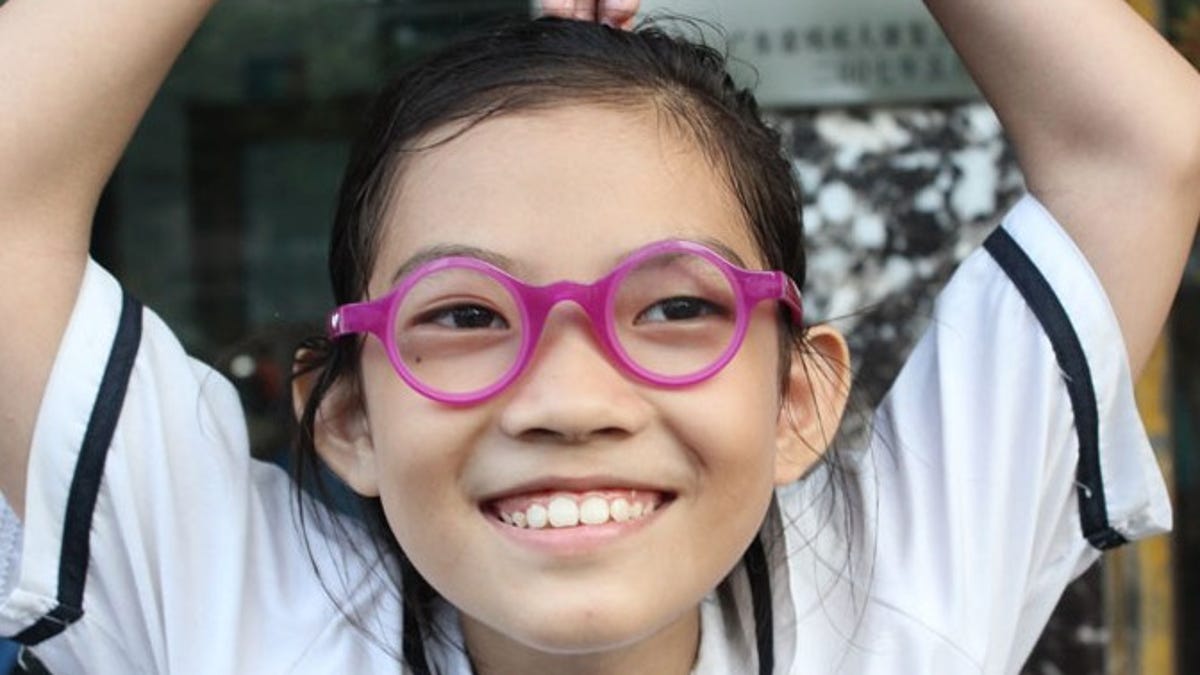Fluid-filled ChildVision specs let kids do the adjusting
A kids' version of eyeglass lenses that can be adjusted with a twist of the dial gets a design nod, hopefully bringing the low-cost specs one step closer to the developing world.

Simple kids' eyeglasses that let wearers tweak the lenses could help solve a problem that has complex implications for young people in the developing world who lack access to the eyewear they need.
The key to the prototype specs, called ChildVision glasses, is their special lenses, made of two clear plastic membranes filled with silicone fluid. Adjusting the lenses via a small dial on the side of the glasses controls the amount of fluid that's pumped between the covers. Depending on the volume, the curvature of the lenses changes, adjusting the strength. More fluid means more curvature, and more power. When fluid is pumped back out, the lens curvature flattens, making for a weaker prescription.
Designed for children between 12 and 18, the glasses earlier this month nabbed the inaugural Visitor Vote award (PDF) at London's Design Museum. Since June, visitors to the institution have voted for their favorite design from 99 nominations displayed at a pop-up installation.
"Our challenge now is to get these glasses to the tens of millions of children whose education is hampered by their inability to see a blackboard in class clearly -- a problem our self-refraction glasses will solve," said Joshua Silver, a retired University of Oxford physics professor who worked on the ChildVision glasses.
Silver gained widespread attention several years back when he first brought glasses with liquid-filled lenses to the forefront. The ChildVisions build on those earlier glasses, called Adspecs. Silver now leads the Center for Vision in the Developing World (CVDW), which received partial funding from Dow Corning, which developed the silicone fluid at the heart of the ChildVision glasses.
An estimated 100 million kids in the developing world suffer from nearsightedness, with some 60 percent of those lacking access to the eyeglasses -- and eyeglass adjustments -- they need, according to CVDW. This can mean struggles in school that lead to far broader social and economic difficulties later in life. A recent study of schoolchildren in rural China estimated that wearing eyeglasses for a year increased average test scores by an amount equivalent to up to six months of extra schooling.
Designed with the help of London industrial design house Goodwin Hartshorn, the ChildVision glasses have straight, lightly springy arms and fit a variety of ages and facial types.
The CVDW expects the glasses to cost approximately $15 once production kicks off and hopes to move that cost toward $5 as manufacturing reaches scale. The organization hopes to begin distribution following clinical trials this year.

